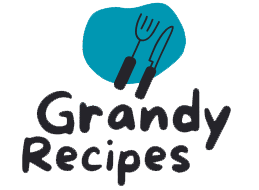Einkorn bread pullman might sound like something your medieval ancestors would carry into battle, but stay with me. This recipe brings together the world’s oldest wheat and the world’s chicest loaf shape—the pullman pan. It’s like baking history in a box, literally. Imagine the hearty aroma of ancient grains filling your kitchen while you pull out a perfectly square, golden-brown loaf so symmetrical it would make a geometry teacher weep with joy.

The pullman loaf, with its signature flat top and tight crumb, was designed for train kitchens—because nothing says innovation like square sandwiches on the go. And einkorn? Well, that grain’s been around since Mesopotamia, dodging genetic modification like a boss. Combine the two, and you get a rustic yet refined bread that’s not just eye-candy for your countertop, but also packed with flavor, nutrition, and—spoiler alert—surprisingly easy to digest.
Table of Contents
What Is Einkorn Bread Pullman?
Einkorn Bread Pullman – The Marriage of Ancient Grain and Modern Loaf
Let’s get this straight: einkorn bread pullman is not just your average sandwich loaf. It’s what happens when the oldest grain known to humankind meets the sleek, uniform elegance of a pullman pan. Picture this: a golden square loaf, soft yet structured, with a buttery aroma and slightly nutty bite. It’s like your grandma’s wholesome baking got a facelift from a French pastry chef.
But what exactly makes it so special? First, einkorn. This ancient grain hasn’t been tampered with like modern wheat. No hybridization. No overbred gluten. Just pure, nutrient-rich goodness that’s been around since the dawn of farming. Then comes the pullman—also known as a pain de mie pan—which transforms sticky einkorn dough into a refined, square masterpiece. Together? They’re a dream team.
What Is Einkorn, and Why Does It Matter?
Einkorn is the OG wheat. We’re talking 10,000 years of history packed into one small, golden kernel. Unlike today’s wheat, einkorn has a simple, unmodified genetic structure. That means lower gluten content, more protein, and a generous helping of essential nutrients like lutein, zinc, and vitamin B6.
But don’t confuse “low gluten” with “gluten-free.” Einkorn still contains gluten—it’s just weaker and more digestible for many people. That makes it perfect for those who want a gentler grain without sacrificing texture and flavor.
So when you bake an einkorn bread pullman, you’re not just making bread—you’re tapping into an ancient legacy. And yes, it sounds dramatic. But wait until you taste it.
What Makes the Pullman Pan a Perfect Match for Einkorn?
Einkorn dough is a bit like a rebellious teen—soft, unpredictable, and not into structure. That’s where the pullman pan comes in. This lidded rectangular pan forces the dough to rise up rather than out, creating that signature square shape with a fine, uniform crumb.
This is especially useful for einkorn, which has delicate gluten that doesn’t offer strong elasticity. With the pullman pan, you get:
- A consistent shape (no wonky loaves)
- Better oven spring and rise
- A tight crumb that’s perfect for slicing
- Crust control (with or without the lid)
In short, the pullman pan gives einkorn the confidence to stand tall and bake beautifully. If you’ve struggled with einkorn bread collapsing or turning out too dense, the einkorn bread pullman method is your solution.
Learn more about gluten-free baking options to expand your healthy bread-making arsenal: Gluten free filo sheets
The Rise of Einkorn Bread Pullman in Modern Kitchens
Thanks to the rise in traditional baking and health-conscious cooking, einkorn bread pullman is becoming a staple in artisan kitchens. It’s ideal for those who want a nutritious loaf without ultra-processed grains, and it works beautifully in everything from sandwiches to French toast.
More importantly, it’s a joy to make. Once you get the feel for einkorn’s quirky dough, the process becomes intuitive, even meditative. The reward? A golden, square loaf that not only tastes fantastic but feels like a win against industrialized wheat.
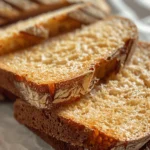
Einkorn Bread Pullman
- Total Time: 90 minutes
Ingredients
3 ¼ cups whole grain einkorn flour
1 ½ tsp sea salt
1 tbsp honey
2 ¼ tsp instant yeast
1 ⅓ cups warm water
1 ½ tbsp olive oil
Instructions
Combine water, yeast, honey, and oil in a bowl.
Mix in einkorn flour and salt until a dough forms.
Let rise 1 hour covered.
Shape and place in greased pullman pan.
Let rise 30–40 minutes.
Cover and bake at 375°F for 35–40 mins.
Cool fully before slicing.
Notes
Let it cool completely to avoid a gummy texture.
- Prep Time: 15 minutes
- Cook Time: 40 minutes
How to Make Einkorn Bread Pullman – Step-by-Step Guide
Get Ready: Ingredients & Tools You’ll Need
Making a flawless einkorn bread pullman starts with choosing the right ingredients and tools. Einkorn behaves differently than modern wheat, so don’t assume your go-to bread recipe will translate perfectly. Here’s what you’ll need for one medium loaf:
Ingredients:
- 3 ¼ cups whole grain einkorn flour
- 1 ½ tsp sea salt
- 1 tbsp honey (optional, but recommended)
- 2 ¼ tsp instant yeast
- 1 ⅓ cups warm water (around 100°F)
- 1 ½ tbsp olive oil
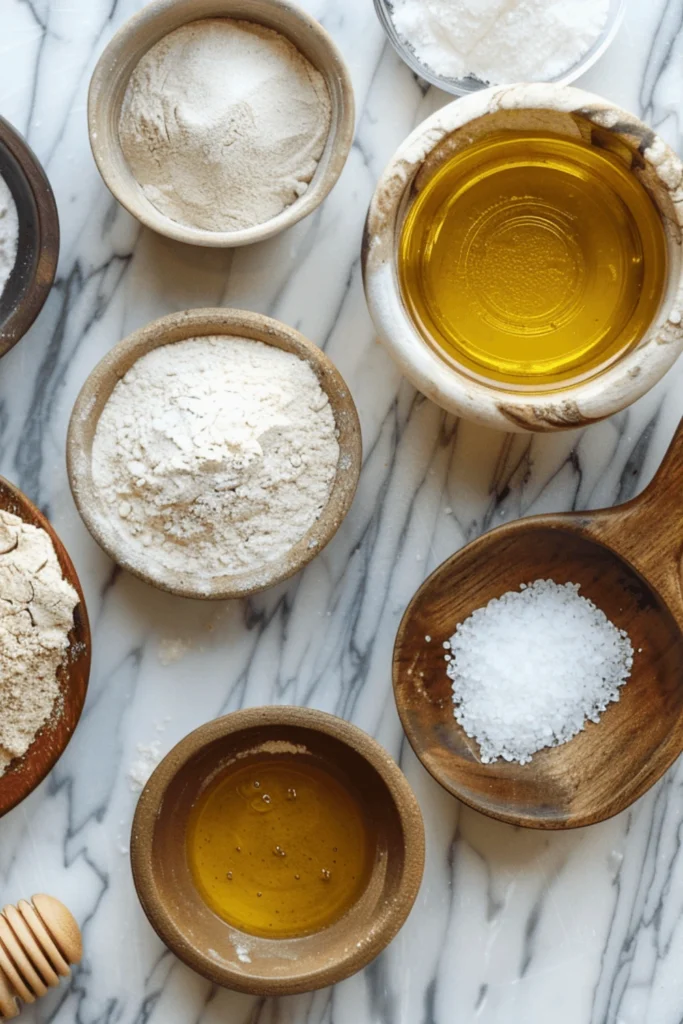
Tools:
- Pullman loaf pan (9x4x4 is ideal)
- Mixing bowl
- Dough whisk or wooden spoon
- Silicone spatula
- Kitchen scale (einkorn can be dense, so precision matters)
- Plastic wrap or damp towel
- Bench scraper (optional but helpful)
Pro Tip: Einkorn bread pullman benefits from gentle handling. This dough is tender, and rough kneading can break its already fragile gluten strands.
Step-by-Step Method for Perfect Einkorn Bread Pullman
1. Mix the Dough Gently
In a large mixing bowl, combine the warm water, yeast, honey, and olive oil. Stir lightly and let sit for 5 minutes until foamy. Next, add in the einkorn flour and sea salt. Mix gently until a shaggy dough forms. Einkorn absorbs water slowly—don’t rush it.
2. First Rise – Let It Relax
Cover your bowl with a damp towel or wrap. Let the dough rise in a warm spot for 45–60 minutes. Einkorn doesn’t rise dramatically like other flours, but it should puff up by about 30–40%. This is normal for einkorn bread pullman, so don’t panic if it looks more modest.
3. Shape for the Pullman Pan
Oil your hands and your counter. Gently turn out the dough and fold it into a rectangle, being careful not to deflate it too much. Tuck the edges under and place it into your greased pullman pan seam-side down. Level the top slightly with a spatula.
4. Second Rise – Pan Power
Cover the pan with the lid slightly ajar and let the dough rise again until it reaches about ¾ of the pan’s height—typically 30–40 minutes. Don’t wait for it to hit the lid or it’ll overproof.
5. Bake with Confidence
Preheat your oven to 375°F. Slide the lid fully closed and bake for 35–40 minutes. The steam inside the pan helps the bread rise and creates that signature soft-yet-structured crumb that makes einkorn bread pullman so beloved.
Remove the lid in the last 5 minutes for a bit more crust if desired.
6. Cool Before Slicing
Let the loaf rest in the pan for 10 minutes, then remove and cool on a wire rack for at least 1 hour. Resist the urge to slice too soon—einkorn bread pullman needs time to set or you’ll end up with a gummy texture.
Nutritional Benefits of Einkorn Bread Pullman
Why Einkorn Is a Nutritional Powerhouse
When it comes to whole grains, einkorn is in a league of its own. This ancient wheat packs more nutrition per bite than modern varieties. So when you’re enjoying a slice of einkorn bread pullman, you’re not just indulging—you’re fueling your body with essential nutrients.
Here’s what sets einkorn apart nutritionally:
- Higher protein than common wheat (up to 30% more)
- Rich in antioxidants, especially lutein and beta-carotene
- Naturally high in vitamin B6, iron, and potassium
- Lower gluten content with a more digestible structure
- Contains a better balance of omega-3 to omega-6 fatty acids
So whether you’re focused on heart health, brain function, or stable energy levels, einkorn bread pullman delivers more than just comfort—it offers whole-body nourishment.
How Einkorn Supports Digestive Health
Einkorn’s gluten structure is simpler, with only 14 chromosomes compared to modern wheat’s 42. This means the body often finds it easier to digest, especially for individuals who struggle with wheat sensitivity (not to be confused with celiac disease).
Many bakers and eaters alike report fewer symptoms like bloating or brain fog when switching to einkorn bread pullman. While it’s not gluten-free, it’s undeniably gentler on the gut—and that makes a big difference for daily digestion and gut health.
Looking for more gut-friendly recipes?
Discover great ideas like cortisol water recipe to support digestion and relaxation while your bread rises.
Is Einkorn Good for Blood Sugar? Yes, Here’s Why
Unlike refined flours that spike blood sugar, einkorn bread pullman digests more slowly thanks to its high fiber and protein content. That slower digestion can result in steadier glucose levels and longer-lasting energy.
Its naturally lower carbohydrate-to-fiber ratio means it behaves more like a whole food in your system—less crash, more sustain. So yes, you can enjoy that golden loaf and still keep your energy in check.
A Side-by-Side Nutritional Snapshot (Per 100g Cooked)
| Nutrient | Einkorn Bread Pullman | Modern White Bread |
|---|---|---|
| Protein | 12.5g | 7.5g |
| Fiber | 3.6g | 1.0g |
| Iron | 4.1mg | 0.7mg |
| Vitamin B6 | 0.3mg | 0.04mg |
| Gluten Content | Low (digestible) | High (aggressive) |
| Omega-3 to Omega-6 | Balanced | Poor |
Taste and Texture – Why Einkorn Bread Pullman Feels Special
A Flavor That’s Anything but Basic
Bite into a slice of einkorn bread pullman, and you’ll know right away—this isn’t your average loaf. Einkorn offers a deep, nutty taste with mild sweetness, often noted for its earthy richness, toasty aroma, and a hint of buttery smoothness. Its depth of taste stands out without needing loads of salt, sugar, or added fats.
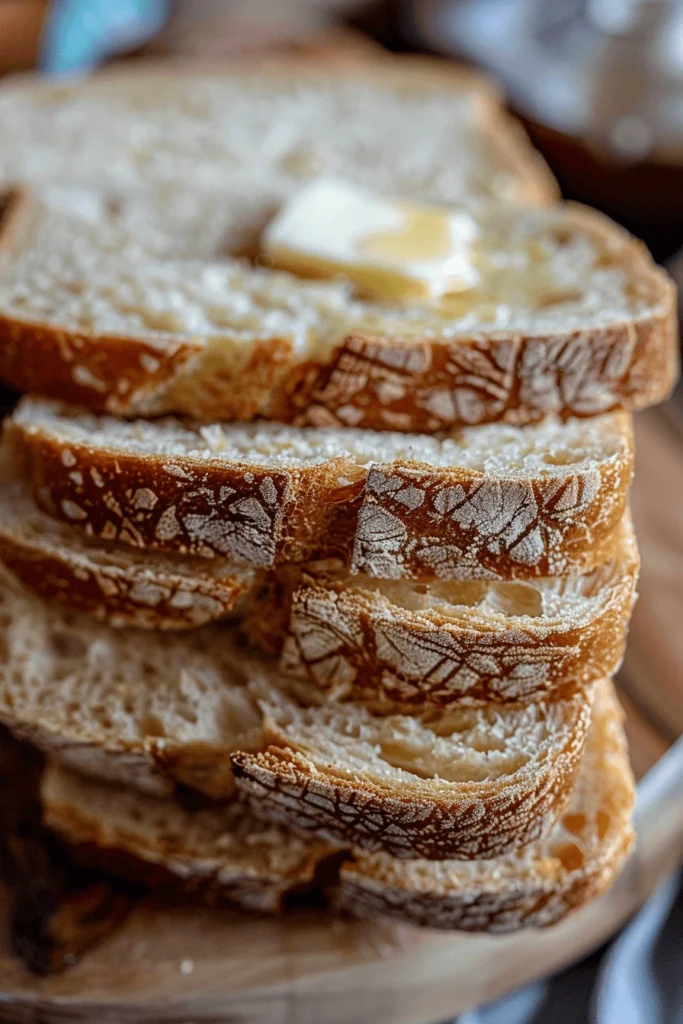
In contrast to bland commercial breads, einkorn bread pullman tastes like real food—like something that grew in actual soil, not a factory. It brings complexity to everything from sandwiches to breakfast toast.
The Crumb: Soft, Fine, and Sliceable
Pullman pans are built for clean cuts, and einkorn flour, though lower in gluten, still manages to produce a beautiful, tight crumb when handled properly. The crumb of an einkorn bread pullman loaf is:
- Compact and tender, not airy or hole-ridden
- Perfectly structured for slicing
- Great for holding spreads, grilled cheese, or French toast batter
The soft interior combined with the gentle crust makes it one of the most versatile ancient grain breads around.
What About the Crust? It’s Goldilocks Perfect
Not too thick. Not too crunchy. Einkorn bread pullman develops a soft, slightly chewy crust—especially when baked with the pan lid on the entire time. If you like a firmer crust, just remove the lid for the final 5–10 minutes of baking.
And don’t worry: even with its lower gluten, einkorn can still brown beautifully. That signature golden tone? That’s all einkorn.
Texture Tips: How to Get the Perfect Feel Every Time
Want to avoid dense or gummy results? Here’s what makes a difference:
- Let the loaf cool completely before slicing. Einkorn continues setting after it comes out of the oven.
- Use a kitchen scale for accuracy. Too much flour = tough bread.
- Use the lid. The pullman pan creates consistent heat and helps einkorn hold shape.
This is why baking einkorn bread pullman is part science, part art—and the results are worth it every time.
Check out our gluten-free carrot cake recipe for another moist, flavor-packed treat to serve after your next einkorn loaf.
Storage Tips – How to Keep Einkorn Bread Pullman Fresh
Room Temperature Rules for Short-Term Storage
After baking your beautiful einkorn bread pullman, it deserves to stay fresh as long as possible. For short-term storage (up to 3 days), your best bet is to keep it at room temperature in a bread box, linen bag, or loosely wrapped in parchment paper.
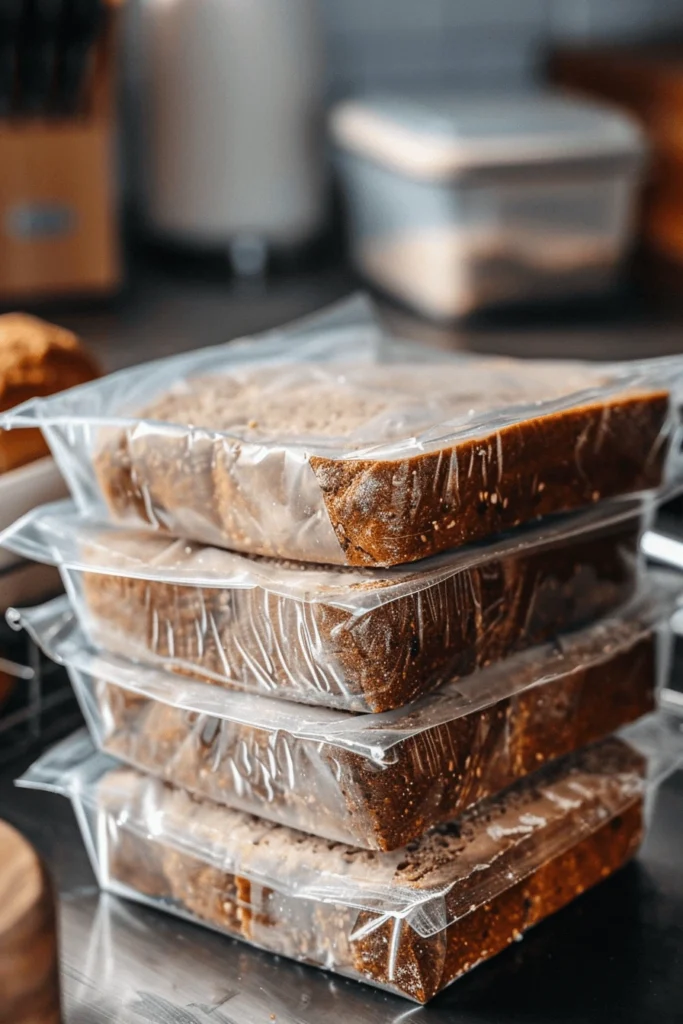
Avoid airtight plastic bags unless your kitchen is unusually dry—einkorn bread pullman is naturally moist and can go soggy fast if sealed too tightly.
Pro Tip: Slice only what you need. Leaving the loaf intact helps retain moisture longer.
Freezing for Long-Term Freshness
Got leftovers? Freeze them! Einkorn freezes exceptionally well, and the pullman loaf shape makes it super easy to portion.
Here’s how to do it right:
- Let the loaf cool completely.
- Slice the bread evenly.
- Wrap slices in parchment paper and place in a freezer-safe bag.
- Remove as much air as possible before sealing.
When you’re ready to enjoy, just pull out a slice or two and pop them straight into the toaster or let them thaw at room temp for 30 minutes. The flavor and texture of einkorn bread pullman hold up beautifully this way.
Reheating Without Ruining the Crumb
Microwaves and einkorn don’t mix well—it tends to toughen the crumb. Instead, warm slices in a toaster oven or low-heat oven (300°F for 8–10 minutes) to bring back that fresh-baked feel.
Want an ultra-crusty edge? A quick splash of water on the slice before toasting can work wonders.
How to Tell If Your Einkorn Bread Pullman Has Gone Bad
Due to its lower gluten and natural oils, einkorn bread pullman can spoil slightly faster than commercial loaves. Signs to watch for include:
- A sour or “off” smell
- Mold growth (especially around the crust or bottom)
- A sticky or overly moist feel after a few days
When in doubt, trust your nose. If it smells off, toss it.
Why Is Einkorn Bread Pullman More Expensive?
The Truth About Ancient Grain Pricing
If you’ve browsed the flour aisle lately, you’ve probably noticed that einkorn isn’t exactly cheap. And when you factor in the special pullman loaf pan and artisanal flair, a homemade einkorn bread pullman can feel like a luxury item. So what gives?
Here’s why einkorn comes with a higher price tag:
- Lower yields – Einkorn produces significantly less per acre than modern wheat.
- Labor-intensive processing – It’s a hulled grain, which means extra steps to remove the outer shell.
- Specialized farming – Most einkorn is grown by small-scale or organic farms using sustainable practices.
- Minimal hybridization – This grain hasn’t been modified for mass production, which protects its integrity—but also limits supply.
The result? A nutrient-rich, heritage flour that costs more to grow, harvest, and mill—but delivers far more in return.
Is Einkorn Bread Pullman Worth the Price?
Absolutely—especially if you value quality over quantity. Yes, your typical sandwich loaf from the store is cheaper, but you’re also getting a refined, bleached, nutritionally stripped product.
With einkorn bread pullman, you’re enjoying:
- Higher nutrition per slice
- Better flavor and digestibility
- Zero industrial additives or bleaching
- A direct connection to regenerative agriculture and ancient food traditions
It’s like comparing a fast-food burger to a hand-formed, grass-fed patty from a gourmet chef. The price reflects the process—and the experience.
Buying in Bulk? Here’s a Tip
If you’re baking regularly, consider buying whole einkorn berries and milling them yourself. It’s more cost-effective over time and keeps the nutrients intact longer. You’ll save money and get the freshest flour possible for your next einkorn bread pullman loaf.
Is Einkorn Bread Pullman Anti-Inflammatory?
The Gluten Question: Friend or Foe?
One of the top questions people ask about einkorn bread pullman is whether it’s inflammatory like modern wheat. And here’s the good news: einkorn may actually be the least inflammatory of all traditional wheat varieties.
While einkorn still contains gluten, its gluten is structurally different. It lacks the aggressive D-genome found in hybrid wheat—one of the main triggers for inflammation and gut irritation in many people. That’s why individuals with non-celiac gluten sensitivity often find einkorn bread pullman easier to digest and less reactive.
Einkorn’s Natural Anti-Inflammatory Compounds
Beyond gluten, einkorn is naturally rich in antioxidants and anti-inflammatory nutrients. Each slice of einkorn bread pullman delivers:
- Lutein and beta-carotene, which support eye and brain health
- Polyphenols, which help fight oxidative stress
- Magnesium and zinc, which promote cellular repair
- Vitamin E, a powerful anti-inflammatory antioxidant
These nutrients help balance out inflammatory responses in the body, particularly when compared to nutrient-stripped white breads.
Check out our gluten-free filo sheets if you’re also reducing inflammation through diet.
What About Blood Sugar and Inflammation?
Spikes in blood sugar can lead to chronic inflammation—but einkorn bread pullman digests more slowly than modern bread. Thanks to its balanced ratio of protein and fiber, einkorn helps maintain steady glucose levels, reducing the likelihood of post-meal crashes and inflammation-related symptoms.
So while no bread is completely inflammation-free, einkorn bread pullman is a dramatically better choice for those trying to lower inflammation through diet.
Should You Eat Einkorn Every Day?
If your body responds well to einkorn, yes—daily consumption is absolutely reasonable. It’s a wholesome, real-food carb source that fuels your body without taxing your gut. As with any bread, moderation matters. But when the loaf is this ancient and nutritious? You’re making a pretty smart daily bread decision.
Learn more about natural ways to support your body with our cortisol water recipe —a great complement to low-inflammatory eating.
Will Einkorn Bread Pullman Spike Your Blood Sugar?
The Sweet Truth About Einkorn and Energy
We’ve all had that bread crash before—you know the one. You eat a slice (or three), and 30 minutes later you’re yawning like it’s midnight. That’s usually what happens with ultra-processed white bread. But with einkorn bread pullman? Totally different story.
Einkorn doesn’t hit you like a sugar bomb. It’s slow and steady. The kind of bread that gives you energy without making your blood sugar do cartwheels.
Einkorn = Real Carbs, Not Empty Ones
Most commercial breads are stripped of all the good stuff—fiber, nutrients, flavor. What you’re left with is basically fluff that turns into sugar real fast. Einkorn, on the other hand, still has its natural grain layers intact. So when you eat einkorn bread pullman, you’re getting:
- Carbs that take longer to break down
- A gentle release of energy
- A full, satisfied belly that lasts hours
That means fewer spikes, fewer crashes, and more staying power. It’s the kind of bread you can eat with breakfast and still feel good by lunch.
When You Eat Better Bread, You Feel It
We’re not saying einkorn is magic. But it sure acts like it. One bite of toasted einkorn bread pullman with some nut butter or smashed avocado, and you’ll see why so many home bakers are switching over.
It fills you up, fuels you better, and doesn’t give you that rollercoaster feeling afterward.
Tips to Keep It Blood Sugar Friendly
If you’re looking to keep your meals even more balanced, try this:
- Add protein: Pair your slice with eggs, cheese, or nut butter.
- Go savory: Skip the jam and sugar spreads—stick with herbs, olive oil, or hummus.
- Toast it: Toasted einkorn bread pullman digests a little slower than soft, fresh slices.
Check out our gluten-free carrot cake recipe for a naturally sweet treat that doesn’t spike your system.
Is Einkorn Bread Pullman Free from Glyphosate?
Let’s Talk About What’s Not in Your Loaf
When you bake a loaf of einkorn bread pullman, you’re not just choosing a different kind of flour—you’re choosing a cleaner kind of food. One of the biggest reasons folks are switching to einkorn is because it’s usually not sprayed with the same junk that shows up in modern wheat farming.
The big one? Glyphosate. That’s the stuff used in a lot of weed killers—and yep, it can sneak into your food through heavily treated grains. But einkorn? It’s grown differently.
Why Einkorn Is Usually Cleaner
Most einkorn comes from small, independent farms—many of them organic or naturally grown—even if not officially certified. It’s not farmed on the massive industrial scale like typical wheat, so it doesn’t get doused with chemicals the same way.
Is every bag of einkorn guaranteed to be chemical-free? Not always. But most trusted brands will proudly tell you if theirs is glyphosate-free. Look for those labels—or better yet, buy from sources you trust.
So when you bake an einkorn bread pullman loaf, you’re already starting with a flour that’s closer to nature, less tampered with, and way easier on your conscience (and maybe your belly).
Clean Flour = Clean Flavor
You can taste the difference. Einkorn has a deeper, richer flavor because it hasn’t been stripped down or sprayed up. That makes every slice of einkorn bread pullman not just feel better—but taste better too.
And that’s what we want in the kitchen, right? Food that doesn’t come with question marks. Just honest, clean ingredients that you feel good serving to your family.
Conclusion: Why Einkorn Bread Pullman Deserves a Spot in Your Kitchen
If you’ve made it this far, chances are you’re ready to try something better. Something real. Einkorn bread pullman isn’t just a trend—it’s a return to baking with purpose, flavor, and care. You get the satisfaction of a soft, perfectly sliced loaf, the nourishment of a truly ancient grain, and a taste that leaves grocery-store bread in the dust.
It’s a loaf with soul. One you can bake on a slow Sunday morning, slice fresh for lunch, and still toast up for breakfast the next day. And once you taste it? You may never go back.
Explore more recipes on GrandyRecipes Pinterest, and stay updated with the latest ideas and tips by following GrandyRecipes on Facebook.
